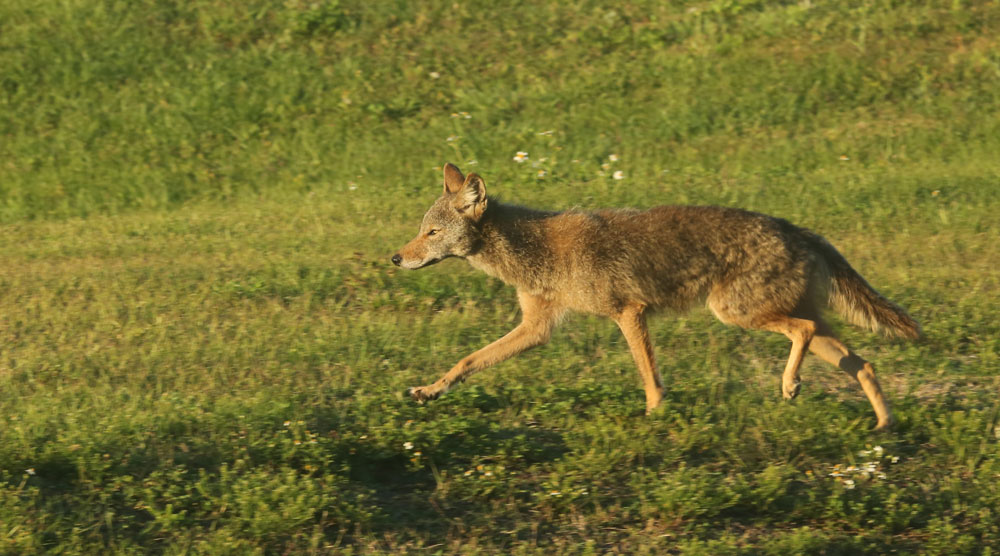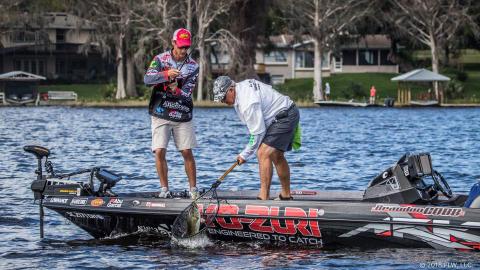
Predator hunting is one of the most thrilling experiences of a hunter's career. If you're hunting to protect your livestock and keep your land safe, or for coyotes' pelts, the tactics remain the same. You should think about what the coyotes are doing in that particular season, where you set up, and what calls to use to bring them in. And, arguably, the most critical factor is to have patience.
There's nothing quite like hunting a predator that has the wary discernment of a master hunter. If you're planning on going out to bag some coyote, here are seven tips to follow.
1. Time of Year
Many hunters ask what the best time is to hunt coyotes. The truth is, each season has its benefits and challenges.
It's like a separate sport when you hunt coyotes in different seasons because you can change up your calls, your set-up, and your tactics to suit the season.
The fall is the time of year that pairs are looking to den up as the breeding season lasts from late December until early March when pups are born. Once the pups are weaned in late spring, the pack moves away from the den, abandoning it.
If you're hunting coyotes for pelts, then consider going after them in the winter when they sport the thickest and most luxurious coats.
2. Time of Day
Along with the season, it's essential to consider the time of day you'll be hunting coyotes. Most successful hunts are carried out in the early morning or evening.
In the heat of the day, coyotes rest. They won't be looking for food during the noontime hours but for shade to keep cool until the heat subsides. You may bag a coyote during this time, but midday hunting is not as consistent as morning and evening hours.
3. How to Find Your Set-Up
If you're on your home turf and know where the coyotes are denning and where they'll be looking for food, then you know where to set up.
If the cows on a neighboring ranch are calving, there is an excellent chance you may bag some coyotes on your home turf. When cows are calving nearby, coyotes will lurk about, searching for a calf if they're lucky or cleaning up after cows that have given birth in the pasture.
If you're not in your home territory and don't know the landscape very well, drive up and down some of the dirt roads in the area you're planning to hunt. Logging and dirt roads provide an excellent means to note where and how the coyotes are moving about the area.
Drive around until you see coyote scat or their tracks going across the road, and note the direction they're moving. Stage your set-up from there.
4. Where to Set Up
The location you choose to set up may be the most critical aspect of hunting coyotes.
First, think about your vehicle. When you're out scouting the countryside for ideal spots to set up, note turn-offs in which to hide your vehicle. Coyotes are wily creatures. If they get wind of you or your ride, they'll scatter.
It's crucial not to get too close to the den or the coyotes in general. Coyotes have excellent hearing and smell, so you'll need to stay low, avoid standing up against the skyline, and use brush or shade as cover.
It may seem contradictory, but, while you're staying low, look for some elevation so that you can easily see any of your prey moving in on your set-up.
5. Downwind
When you're hunting coyotes or any other predator like bobcats, you always have to play the wind. Bobcats and coyotes have an extraordinary sense of smell. When you're choosing the perfect spot for your set-up, make sure the wind is in your face when you're calling.
Coyotes often will hear your call and then circle to approach from the downwind side. That's why it's equally important to have your hunting buddy covering you from the downwind side. Your buddy may even bag more coyotes than you.
6. How Long to Wait
In a predator hunt, the more patience you have, the more animals you can harvest. Predators are wary due to their experience with tracking and attacking prey.
If you're in a contest and have a couple of set-ups, then waiting 15 to 20 minutes after each call is sufficient. If you're hunting for sport with a buddy, try to wait about 30 minutes after a call to see what approaches.
7. Calls
Other than your firearm, your most essential gear is your coyote call. Calls are tools that mimic animal noises, distressed sounds from prey or other coyotes, to draw predators in from afar.
Hunters either use hand calls or automated calls, and there is a raging debate as to which is more effective for what kind of hunt. It boils down to what you're most comfortable using.
Hand calls can either be open or closed reed. Open reed hand calls are easier to learn how to use, but they lack the variations that a closed reed hand call has.
Electronic calls can store up to 240 hunter-tested calls. However, they are machines, so they can fail in ways that your hand calls won't.
Most of the calls you use, whether they're electronic or not, will emit an animal call to bring your predator in. The most popular call is the rabbit distress call—a coyote's favorite meal.
You may want to use coyote vocals, especially when it's the mating season or when the pups are first emerging from the dens. A pup distress call is useful for drawing in a female, who will hear a pup in danger and hightail it to defend her young. Later in the season, opt for the calls you haven't been using, as coyotes are quick learners and will be distrustful of calls they've heard often. The rabbit distress call is the most popular because the coyote believes it is easy prey.
Final Thoughts
If you're headed out after coyotes, whether protecting your livestock or aiming for pelts, you need to know where to set up, how to play the wind, and what calls to use. These tips, as well as knowing your prey well and having quality gear, are essential for a successful coyote hunt.






























